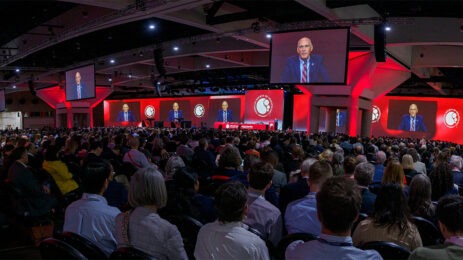In a perfect world, strong attendee turnout would be a guarantee, but unfortunately that’s far from the reality. Selling potential attendees on the value of the event is the first hurdle. Then, once guests are registered as attending, getting them to the event is the next obstacle. Poor weather, illness, appointments, work and traffic are just a few of the things that can stand between the attendee and your event. While this remains an unavoidable aspect of event planning, key strategies will better your chances of achieving a a great turnout. Apply these 10 tactics to boost attendee turnout at your next event:
1. Target your niche. Know your target attendees’ values and preferences so that you can make event choices which accommodate them specifically. For instance, if you are planning an event for an environmental association, make locally sourced food and beverage a priority.
2. Don’t ask for the big bucks. If decadence compels you to raise registration prices, event turnout could take a bit hit. Carefully consider your target audience. Is this an event they would be willing to invest in?
3. Choose a convenient location. Choose a location that is easy for your guests to get to. If the majority of your target audience is located in the Northeast, choose a location with lots of flights to and from that region. Also, make sure that travel between the venue and hotels is simple and convenient.
4. Time it just right. Do your research. Of course, holiday weekends are not ideal for holding corporate events. Also, consider your specific group. Is another industry event happening nearby? Do your attendees prefer day or night, weekday or weekend events?
5. Send simple and seamless RSVPs. The process should be simple for saying both yes and no. In addition, making RSVP seamless through an integrated calendar event helps ensure that attendees are keeping your event in mind.
6. Tag-team it with another organization. Partnering with another organization is a fantastic way to make an event more dynamic. Enlist companies to sponsor or, if suitable, co-host your event.
7. Score a great speaker. Event speakers are a major draw for events. They can provide both education and entertainment value. At times, a great speaker alone can incentivize attendance.
8. Showcase past successes. Showcasing a mix of images and testimonials on social media, email invites and the event page boosts your credibility and branding, as well as giving potential attendees an idea of what the next event will be like.
9. Share your agenda. An event schedule should be constructed long before invites go out. In making this itinerary, ensure that the day follows a reasonable flow, with considerations such as breaks and meals worked in. It’s also important to optimize how you showcase the agenda. Highlight the best parts and write appealing activity descriptions.
10. Define and reiterate value. Be clever about defining the main values the event will offer. Is it networking? A charitable cause? Make sure these align with the specific interests of your audience and then highlight them throughout your promotional materials.
11. Own that hashtag! Work that ad! Let’s not forget about the ultimate modern-day discovery tool—social media. Use the tools Zuckerberg gave you! Creating a unique and relevant hashtag to use on Twitter, Instagram and Facebook is the perfect way to keep tabs on attendee buzz and build excitement about the event. Invest in Facebook advertisements; they have become almost essential for campaign exposure.
12. Set some limitations. Exclusivity appeals to everyone. Advertise your event’s limited space, especially when registration is near closing.
13. Throw in an early-bird special. Give people a good reason to register and/or arrive early. Giveaways, deals and other incentives will encourage this behavior.
14. Showcase, remind and follow-up. The event should get a lot of exposure on your website and social media platforms. To help regain the focus of attendees, general reminders can be distributed through an email blast. Follow up directly through personal emails and phone calls.




